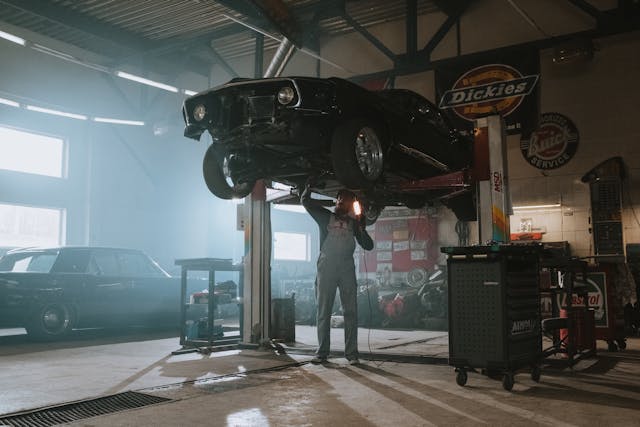Planning a long road trip can be exciting, but have you considered your safety? Spending hours on the road presents unique challenges, and it’s easy to overlook the risks that come with driving long distances. From vehicle maintenance to managing fatigue and sharing the road with large commercial trucks, being prepared is key to a successful trip.

Plan Your Route and Stops
One of the most important steps for a long road trip is careful planning. Having a well-thought-out route in mind helps you avoid unexpected detours or getting lost in unfamiliar areas. Use GPS systems or apps like Google Maps to map out your trip ahead of time. In addition to identifying your primary route, plan for safe rest stops along the way where you can refuel, stretch your legs, or take bathroom breaks. Ideally, you should aim to stop every 2-3 hours.
Pre-planning also allows you to avoid potentially unsafe areas and ensures that you have access to necessary services, such as gas stations and food outlets. Having a plan helps reduce the stress of navigating while driving, allowing you to focus on the road. Also, if you’re traveling through rural or remote areas, it’s wise to have a paper map in case you lose signal.
Vehicle Inspection and Maintenance
Your vehicle’s performance is essential for a safe road trip, so it’s important to inspect your car thoroughly before you depart. Start with checking the tires—make sure they have adequate tread and are properly inflated. This not only prevents blowouts but also improves fuel efficiency. While inspecting the tires, don’t forget to check the spare as well.
Next, inspect the brakes, fluid levels (including oil, coolant, and windshield washer fluid), and lights. Making sure your headlights, brake lights, and turn signals are functioning properly will enhance your visibility and communicate your intentions to other drivers, which is especially important when driving at night or during bad weather. Additionally, if you notice any unusual noises or warning lights, address those issues before setting off.
Pack an Emergency Kit
Even with the best preparation, unexpected situations can arise. Packing an emergency kit ensures you’re ready to handle minor problems while on the road. A well-stocked kit should include a first-aid kit, a flashlight with extra batteries, bottled water, blankets, and non-perishable snacks in case you get stranded. Also, include a set of jumper cables, a tire repair kit, and an emergency roadside assistance contact list.
It’s also a good idea to pack extra phone chargers, a car phone mount, and road flares or reflective triangles for signaling if you break down. Having these essentials on hand gives you peace of mind and ensures you’re equipped to handle minor roadside issues without much hassle.
Stay Alert and Rested
Driving while tired is extremely dangerous, and fatigue is one of the biggest risks on long road trips. Make sure you’re well-rested before you get behind the wheel. If possible, plan your trip so that you’re driving during your body’s natural alert periods, which tend to be in the morning and afternoon, rather than late at night.
During the trip, take regular breaks every two to three hours to stretch and rest your eyes. Pull over to a rest stop or service area where you can walk around and recharge. If you’re traveling with others, switch drivers periodically to prevent fatigue from setting in. Staying alert is critical for noticing road hazards, responding to sudden changes in traffic, and staying aware of other vehicles, including large trucks.
Share the Road Safely with Commercial Trucks
Sharing the road with commercial trucks requires extra caution. These large vehicles behave differently from smaller passenger cars, and understanding how to navigate around them can help you avoid dangerous situations. First, be aware that trucks have larger blind spots—also known as “No-Zones.” An experienced truck accident lawyer explained that if you can’t see the truck’s mirrors, the truck driver can’t see you and it’s best to stay out of these blind spots whenever possible, particularly on the right side and directly behind the truck.
When passing a truck, always do so on the left side and try to complete the pass quickly, but safely. Make sure to leave plenty of room before merging back in front of the truck since they require more distance to stop than smaller vehicles. Avoid cutting in too closely, as this could cause the truck driver to brake suddenly, leading to an accident. Also, give trucks plenty of space in bad weather. Reduced visibility or slick roads make it harder for truck drivers to control their vehicles, so it’s important to maintain a safe following distance.
Use Defensive Driving Techniques
Long road trips often bring you into contact with unpredictable traffic, so defensive driving is essential. Always stay focused on the road and avoid distractions like texting, eating, or adjusting the GPS while driving. If you need to make adjustments, pull over to a safe location.
Maintain a safe speed, adjusting it as needed for weather, traffic, and road conditions. Avoid aggressive driving behaviors such as tailgating, sudden lane changes, or speeding—especially around large vehicles like trucks. Defensive driving helps you anticipate potential hazards and gives you more time to react, reducing the chances of an accident.
Stay Hydrated and Eat Light
Proper hydration is important for maintaining focus and alertness during long road trips. Drink plenty of water, but be mindful not to overdo it to avoid frequent bathroom stops. It’s best to eat light meals, as heavy meals can make you drowsy. Pack healthy snacks like fruits, nuts, and granola bars to keep your energy up without weighing you down.
Monitor Weather and Traffic Updates
Checking weather and traffic conditions before and during your trip helps you avoid potential hazards. Use apps or local radio stations to stay informed about sudden changes in weather, accidents, or construction zones. If severe weather is forecasted, adjust your route or timing to avoid dangerous conditions like heavy rain, snow, or fog.
















Add Your Comment